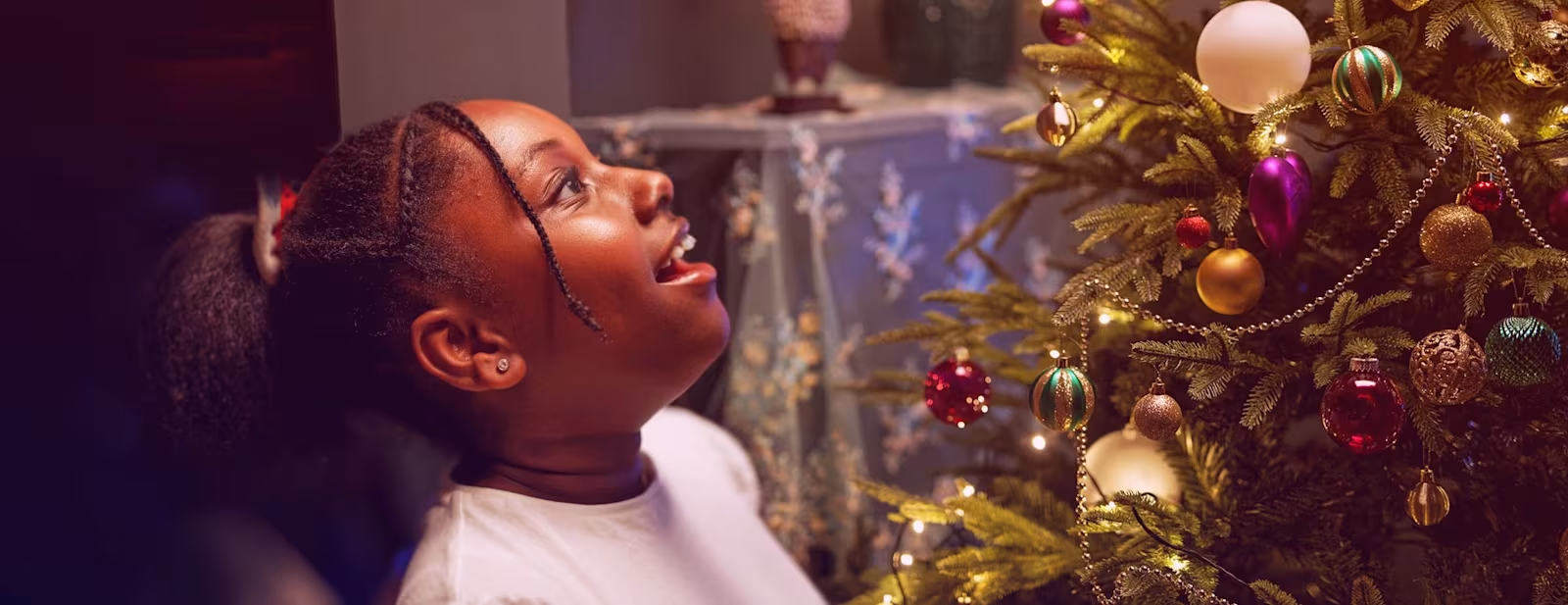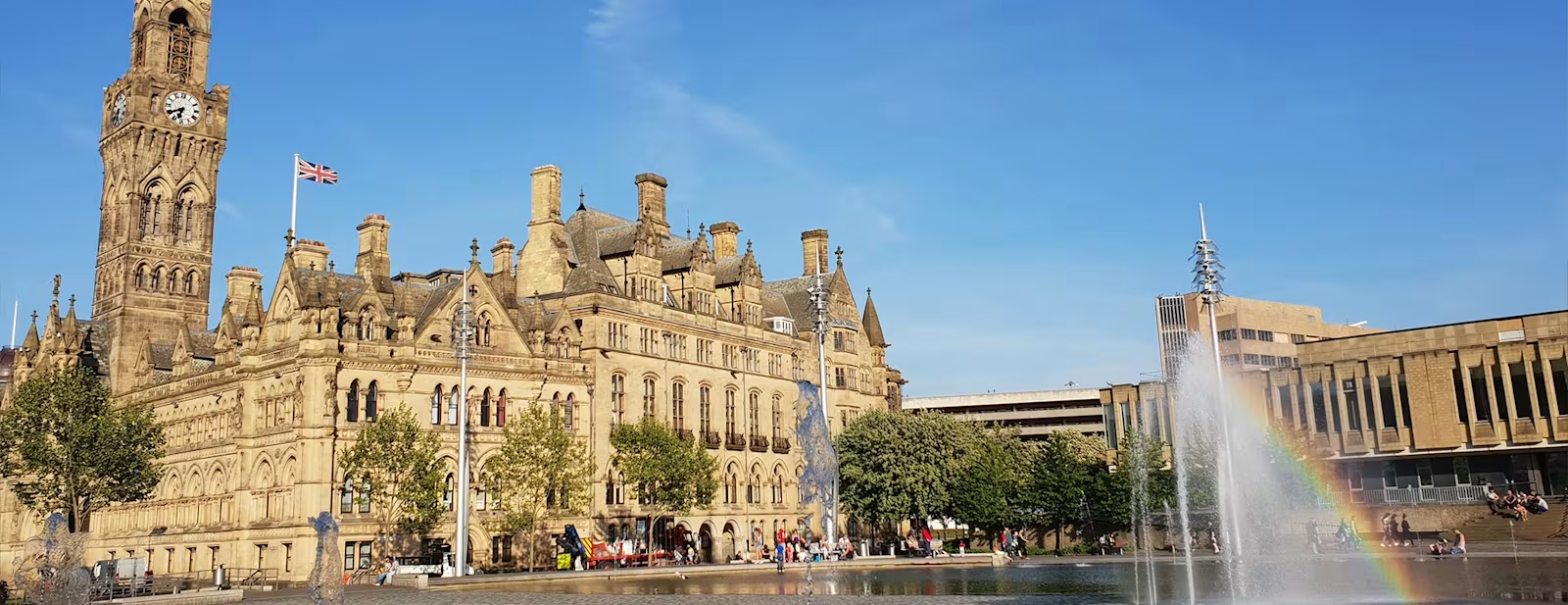Christmas traditions around the world
For secular celebrators today, Christmas is mostly a time of gift giving and food consumption. But this religious holiday was originally made popular in the 9th century to celebrate the birth of the baby Jesus. How countries around the world herald in those glad tidings, however, varies quite widely. Here are a few of our favourite Christmas traditions around the world.
WorldRemit Content Team
• 15 mins read • Updated
Sweden
Christmas traditions in Sweden are similar to those in other western countries - with a few key differences. While many countries commonly associate reindeers with Christmas, Swedes have another four-legged friend instead. Called the Gävle Goat, this 42-foot high straw construction has been a mainstay of their Christmas calendar since 1966. The tradition stems back to pagan times when Christmas was known as Yuletide. “Old Christmas” - our Santa - used to ride a Yuletide goat to bring presents. Today you can find small versions of them bound in scarlet ribbons under Christmas trees.
Sweden builds the Gävle Goat out of straw
St Lucia’s Day (13 December) is commonly celebrated
A popular food eaten is Lussekatts
Ghana
As far as Christmas celebrations around the world go, Ghana’s are slightly different from mainstream ones. Their main focus over Christmas is food. If you’re in Ghana over the festive period, you may end up becoming an “obolo” – someone who gains a lot of weight in a short space of time. It’s hard not to when the Ghanaians are serving up to four to five meals per day, plus snacks. Those who don’t have the means to feast this way will go over to friends' or neighbour’s houses.
Families in Ghana serve four to five meals per day
December is the start of the cocoa harvest in Ghana
Children often put on nativity plays
Philippines
Of all the Christmas traditions around the world, Filipinos have the longest running. They begin to celebrate in September, with activities carrying on throughout all the “ber” months - September, October, November, and December. Christmas in the Philippines is all about the nativity. Their Spanish roots have resulted in 80% of the population being Catholic, and studiously observing the Catholic masses.
Those familiar with the Christmas story will know of the Star of Bethlehem that led the wise men to the birthplace of Jesus. Filipinos make the most of this dazzling part of the story by celebrating with giant lanterns called “parols”.While they are normally created from bamboo and paper, you can find them in all sorts of colours and materials.
Filipinos make giant lanterns called parols
The Christmas period starts in September
There are nine midnight masses for nine days before Christmas Eve
Christmas Eve dinner carries on until the next morning
80% of Filipinos are Catholic, so celebrate Christmas
If you want to find out more about Christmas in the Philippines read our blog here.
Christmas in Kenya
The festive season is celebrated differently in Kenya than in other Christmas traditions around the world. You won't find the usual pine tree decorated with lights, but rather a cypress tree. Kenya’s Christian population often celebrates Christmas Eve with a night vigil called a “Kesha”. The air is filled with songs of praise as carollers go door-to-door singing. At midnight, the local churches ring bells to mark the birth of Jesus.
Kenyans use cypress trees instead of fir
Many people will travel from cities to their home villages
The big Christmas meal is called “nyama choma”
Houses are decorated with ribbons, paper, flowers, and green leaves, slightly different from other Christmas decorations around the world
Mexico
In Mexico, the festive season runs from 12 December to 6 January. It’s punctuated by midnight masses, great feasts, and nine processions or “Posadas''. Light plays a big part in the processions and the festivities, with lots of candles to light the way for Mary and Joseph. Children play with “piñatas” throughout the “posadas”. Blindfolded, they take turns hitting these star-shaped piñatas until sweets fall out. Each point of the star represents one of the seven deadly sins. You might also find some that are shaped like animals, such as birds or donkeys. Either way, it’s great fun for children to rush in and grab as many sweets as they can once the piñata has ‘popped’!
Christmas season begins on 6 December
Nativity scenes and the birth of Jesus features heavily in all celebrations
Nine processions called “Las Posadas” are held in the run-up to Christmas, during which kids hit piñatas
Christmas plays are performed about the shepherds
On Christmas Eve everyone attends a Midnight Mass service, known as the “Misa de Gallo”
Colombia
Christmas preparations in Colombia start on 7 December, which is otherwise known as “Día de las Velitas”, or “The Day of the Little Candles”. Everywhere you look, you’ll see candles illuminating homes, lanterns, and even fireworks lighting up the sky. As the day has Roman Catholic origins, you’ll also see people honouring the Virgin Mary as part of their celebrations. The festive season in Columbia, as with other Christmas celebrations around the world, is a time when families come together, share great food, and show their love for one another.
Colombians light candles all over their homes
Christmas trees are a favourite tradition
A lot of the population of Colombia is Catholic
Family and friends get together to pray during the “novenas”
The “Cena de Navidad” is a meal eaten on Christmas Eve
Christmas Eve midnight mass is the most important church service of the season
If you want to find out more about Christmas in Colombia, have a look at our guide here.
Australia
Christmas traditions in Australia are similar to ones in Britain. But instead of cold, gloomy weather, in Australia, it’s the start of the summer holidays! Decorations are found in houses and shops, with trees being put up as early as November. The main difference to other Christmas traditions around the world is the use of “Christmas bush” in Aussie homes. This is a small tree with green leaves and cream flowers. Towards the end of December, the flowers turn a deep crimson.
On Boxing Day, it’s popular for people to enjoy shrimp on the barbie or a good ole’ surf ‘n’ turf.
Australians enjoy barbecues on the beach
People hang wreaths on their front doors
Poinsettia plants are also popular at Christmas
Christmas displays can be found in cities and towns
Each state capital city holds a large Carols by Candlelight service
Santa rests his reindeer in Australia, preferring to use kangaroos
United States
The United States is a melting pot of cultures and each one has stamped its mark on its Christmas traditions. You can find many of the popular Christmas celebrations from around the world in every corner of the country. One popular custom at Christmas in the US is to get together as a family and make a gingerbread house. You can find custom kits that come with everything you need to create and decorate your own gingerbread houses. This tradition is popular amongst children, and they may even make their festive house while at school.
Big light displays, huge Christmas trees, and of course Santa plays a huge role in their festivities.
Americans build gingerbread houses
Lights are hung on houses
Popcorn is threaded on a string as decoration
Santa visits all the children, checking his naughty list
Elves can be found on shelves keeping an eye on kids for Santa
Eggnog is a popular Christmas drink
Christmas Eve is a time of huge meals, family, and friends
Many Americans go to church on Christmas Day, and then relax
Cookies and milk are always left out for Santa, along with carrots for his reindeer
Nigeria
Christmas in Nigeria is a time for families to get together. Great feasts of meat, stew, jollof rice, and yams are served on Christmas Eve, which turns into a party that can last all night long. Children play with firecrackers, and on Christmas morning everyone goes to church.
If you want to find out more about Christmas in Nigeria, check out our guide here.
Venezuela
Venezuelans aren’t afraid to stay up late (or get up early) to celebrate Christmas. In addition to the Midnight Mass church services, the people of Caracas can also be found skating around town on roller skates! The roads are often closed to traffic by 8am to make it safe for people to skate to their early morning church service. Fireworks are popular on Christmas Eve, as is “Gaita” music - folk music from the Zulia state. Venezuela's Catholic roots are seen in the midnight mass on Christmas Eve, and the “Epiphany”, or Feast of the Three Kings on 6 Jan.
In Caracas, Venezuelans roller-skate to morning church services
Nativity scenes are often more popular than Christmas trees
The main presents are exchanged at midnight on Christmas Eve
The Christmas season lasts until 6 Jan with the “Epiphany”
United Kingdom
The UK has been responsible for so many Christmas traditions around the world. In the old days, the Empire covered many countries, on every continent, so their customs spread far and wide. You can still see many of them - like a Christmas goose or turkey, roast potatoes, Christmas trees, and mince pies peppered across cultures. Trees are decorated by the whole family, usually on 6 or 16 December, and MUST be taken down by New Year, or you will have bad luck for the year to come. Nativity plays, elaborate light displays, and carol services are held all over the country. Father Christmas features heavily and will leave toys for good kids and a lump of coal for bad ones.
The English are also known for hosting elaborate theatrical performances called Pantomimes. These musicals involve slapstick humour, “Dames”, and audience participation that brings traditional fairy tales to life in a humorous way. Quirky? Yes. But enjoyable nonetheless!
British people put on over-the-top theatre productions called Pantomimes
People attend the switching on of lights at Oxford Circus in London and most towns and cities
Most homes have a Christmas tree, some even have two
Father Christmas fills stockings and leaves presents for good kids, and coal for bad ones
Stockings are hung by the fireplace so Father Christmas can find them when he comes down the chimney
Children leave brandy and mince pies out for Father Christmas
Christmas cake is a feature on every festive table
Canada
Home to a melting pot of different cultures, it’s no wonder some Canadian households have very different Christmas traditions, while some share similar Christmas celebrations around the world. Christmas cards, gifts, and decorations are popular, with many people putting up elaborate light displays. Christmas Eve is a time for family, delicious food, and plum pudding.
Some other cultures in Canada celebrate Christmas differently. While some enjoy skating or tobogganing, others visit neighbours dressed up in silly costumes. The Inuit or native peoples have gatherings where they dance, sing, and exchange gifts.
Belief in Santa Claus is popular amongst Canadian children. And to help Santa trek through the streets of Toronto more efficiently, the people of Canada host a “Santa Parade” every Christmas. For over 100 years, this tradition sees hundreds of children following along as Santa is pulled through the streets on his sleigh, along with animated floats, bringing the magic of Christmas to life.
In Toronto, there’s a dedicated Santa parade for children
Stockings are hung by the fireplace for Santa
Going skiing, skating or tobogganing is popular if there is snow
Dancing, singing, and gift-giving are traditional among native peoples
Many Canadians have cookie baking parties in the days before Christmas
Ice sculptures and light displays are popular all over the country
In northern Canada a taffy pull is held to celebrate St Catherine, the patron saint of single women
Christmas cake, plum pudding, and mince pies are eaten across the country in most cultures
France
In France, the main Christmas meal is eaten on Christmas Eve or early Christmas morning. Dishes include capon or turkey, lobster, cheeses, foie-gras, venison, and oysters. These are followed by a rich sponge or ice cream cake called a “bûche de Noël”.
Homes are decorated with nativity cribs depicting the birth of Jesus. Clay figurines are handmade or bought and displayed inside the scene. Often these scenes have some characters that are different from other Christmas traditions around the world, including a policeman, a baker, a butcher, and a priest. Children receive gifts from the french version of santa, called “Père Noël”.
French people eat the main Christmas meal, called “Réveillon”, on Christmas Eve
Nativity cribs can be found in most Catholic homes
Christmas decorations like lights and trees are popular
One of the biggest Christmas markets in Europe is held in Northern France
“Happy Christmas” in French is “Joyeux Noël”
In some parts of France people eat 13 desserts at one meal
Spain
Christmas in Spain begins on 24 Dec or Christmas Eve. Many people head to church for a church service called “La Misa Del Gallo”, or the Mass of the Rooster. This is because a rooster was supposed to have crowded on Christmas Eve at the exact moment Jesus was born. The main Christmas meal is eaten on Christmas Eve, before midnight mass, and is called “Nochebuena”. In the run-up to Christmas Eve children visit friends and neighbours, taking part in “piden el aguinaldo”, where they sing carols and ask for gifts of money or sweets.
The Christmas Eve meal is similar to other Christmas traditions around the world, with turkey being popular. In coastal areas, you will find seafood featuring predominantly on the menu including fresh fish, lobster, mollusks, and crabs.
Spanish people across the country celebrate the “Epiphany”, or “Feast of the Three Kings”. This is held on 6 Jan, and is held in honour of the three wise men who visited Jesus when he was born. Many children don't get gifts on Christmas day and only on Epiphany.
Netherlands
The Netherlands begin their Christmas festivities on 5 December when Sintaklaas brings the children their presents. Sinterklaas is the origin of Santa and shares many of the same features like red robes, jolly red cheeks, and gift-giving. Traditionally the story goes that Sinterklaas lives in Madrid, Spain. He arrives at a different Dutch harbour every year to give as many children a chance of seeing him as possible. Once he arrives, he parades through the streets on a white horse with his servant “Zwarte Pieten”. Piet climbs down the chimney to deliver presents to good children and takes bad ones away to Spain in a sack to learn a lesson.
Christmas Day is a quiet affair with a church service in the morning and a large lunch to follow. On Christmas Eve, Santa Claus - who is an entirely different person from Sinterklaas - visits from Lapland in Finland and brings them more presents.
There are two Christmas days - “Eerste Kerstdag” and “Tweede Kerstdag”
Families eat together on the second Christmas day
Meals are served with a small stove in the middle of the table which is called “gourmetten”
Dutch children believe in two mythical men who bring gifts - Sinterklaas and Santa Claus
Celebrations begin on 5 December or St. Nicholas Day
Zimbabwe
Zimbabweans love to celebrate Christmas, with most of the festivities happening on Christmas Day. The day begins with a church service, after which a big party is held. Most people have friends and family around to their homes, both in the city and in the country. Living rooms are adorned with Christmas trees, ivy, and Christmas decorations found around the world. On the way home from the church service people stop at each other's houses and party. Big speakers are put outside to play carols, as well as current pop music and old African favourites.
Gifts are exchanged, often consisting of clothes and shoes. Often these are the only new clothes a person will receive for the whole year. The Christmas Day meal stars roast chicken and rice as the hero, as chicken is expensive in Zim and only eaten on big occasions. In the big cities, you may find Santa riding through the streets on a fire truck, handing out presents to children.
Children receive gifts from Santa
Clothes and shoes are often given as gifts before Christmas day
Chicken and rice is the main Christmas meal
Santa rides a firetruck in the big cities If you want to find out more about Christmas in Zimbabwe, have a look at our blog here.
Denmark
Denmark is the home of the advent calendar. This is one of the most popular Christmas traditions around the world. Advent calendars count the days until Christmas, with each successive Sunday being a time for gifts and church services in Denmark. Each day of December is represented in an advent calendar by a little gift or chocolate.
Christmas parties in Denmark begin on 1 November. Every weekend a get-together is held. Cakes and cookies are baked by the whole family, then handed out to friends and loved ones. The main meal is eaten on Christmas Eve after a 4pm church service. Roast goose or duck - called a “Juleand” - roast sweet potatoes, cabbage, and beetroot are popular. Rice pudding is eaten after the meal, and then the family gathers to light the Christmas tree, sing carols, and open presents.
In Denmark children believe in the “Julemanden” which means “Christmas Man” or “Yule Man”. He shares many traits with Santa like a red suit, and a sleigh pulled by reindeer.
Advent calendars are popular and begin at the start of December
Christmas parties begin on 1 November
Cookies and cakes are baked to give to neighbours
Gingerbread houses are popular among families
“Julemanden” is the Danish name for Santa
The main meal is eaten on Christmas Eve
Japan
Christmas is not traditionally an eastern holiday and is still not a celebration or a religious holiday as Christianity is not prevalent in the country. However, December in Japan is more of a copy of Christmas around the world. Lights and trees are put up in shops and homes, and gifts are given to loved ones. Christmas Eve is more popular than Christmas Day, especially for couples, who go on long walks to look at the lights and have dinner. Fried chicken is the favourite meal eaten on Christmas Eve. The one traditional food eaten in Japan at Christmas is cake. Their Christmas cake isn't fruit-based, however, it's a light sponge cake with cream icing. In fact, the cake emoji [🍰]is a Japanese Christmas cake.
Japan only started celebrating Christmas recently
Lights and gifts are popular on Christmas Eve
Couples like to take long romantic walks
Fried chicken is a traditional Christmas Eve meal in Japan
Christmas is not a national holiday in Japan, and businesses don’t close
Decorations in homes are not popular, and if they are used they will be taken down by 25 December.
Germany
Like the Danes, Germans begin to celebrate Christmas at the beginning of December. Advent is celebrated in several ways, including calendars, wreaths, and candles. Each day a candle is lit, or a present is opened in the run-up to Christmas.
Christmas trees have been traced back to Germany in the middle ages. The tree was secretly decorated by parents, leading children to believe that elves and magic exist. Families would gather around the tree on Christmas Eve and sing carols like “O Tannenbaum, Ihr Kinderlein Kommet” and “Stille Nacht”.
The main festive meal is eaten on Christmas Eve and usually consists of a goose or a carp. Like other European countries, children believe in St Nicholas Day on 6 December, when Saint Nick will bring gifts and put them in your shoes. Santa, or Father Christmas, called “der Weihnachtsmann”, brings more gifts on Christmas Eve.
The main meal is eaten on Christmas Eve
A fruit-studded pudding called “Stolen” is popular
Children go from house to house singing carols to raise money for charity
The Advent is popular with calendars and candles being present in most homes
Christmas trees originated in Germany
Christmas Day is called “Erster Feiertag” or first celebration, and the 26 December is known as “Zweiter Feiertag” second celebration
Germany is known for its Christmas markets
South Africa
South Africa follows many of the same Christmas traditions as the rest of the world. Trees are found in every living room, decorated with baubles and tinsel. In South Africa, Christmas is a time of sunshine, swimming, and long lazy days. Most businesses close for a few weeks over the season, and schools close at the beginning of December.
Some people eat the main Christmas meal on 24 December while others have a quiet night. On Christmas Day friends and families gather to eat together and exchange gifts. Some travel from the cities to their traditional rural homes - often the only time of the year that they do so.
The main meal is usually a turkey or a duck, with all the trimmings like roast potatoes, pumpkin and yellow rice with raisins. The meal is followed by plum pudding and fruit Christmas cake.
Gifts are given by families on Christmas Eve as well as the next morning. South Africa shares many of its Christmas traditions with the UK thanks to the two country’s long history. If you want to find out more about Christmas in South Africa read our blog here.
Christmas traditions around the world share many things in common. Trees, decorations, and gift-giving can be found in all corners of the globe, and a jolly fat man in red seems to visit every continent. Although not everyone celebrates the festive season in a religious way, the feeling of love, coming together and being closer as a family is universal. If you want to learn more about Christmas, how people celebrate it, what it costs and more, have a look at our blogs. We wish you a Happy Christmas!
Christmas traditions around the world : FAQ
What are the most popular traditions around the world on Christmas ?
Gift-giving, decorating trees, setting up light shows and large meals are the most popular traditions. Many cultures like twinkly lights, tinsel, and baubles on trees. Santa Claus is another popular character in almost every Christmas tradition globally. Children across every continent lie awake on Christmas Eve listening to the jingle of bells and clop of hooves on their roof.
What is the most unique Christmas tradition?
The most unique Christmas tradition has got to be the roller skating church goers of Venezuela. Roads are closed, people line the streets, and hundreds of congregation members roller skate to the Christmas Day church service.
What is the oldest Christmas tradition?
The nativity play is the oldest Christmas tradition around the world. The birth of Jesus is depicted in small scenes made from various materials like clay or wood. Most cultures recognise Mary, Joseph, the baby, and some farm animals - but others go further with three wise men and even a policeman, a baker, a butcher, and a priest.
Back to home
WorldRemit allows customers to stay connected and support their loved ones. Our Content Team plays an integral part in that. We celebrate the global community and help you to achieve your ambitions.





